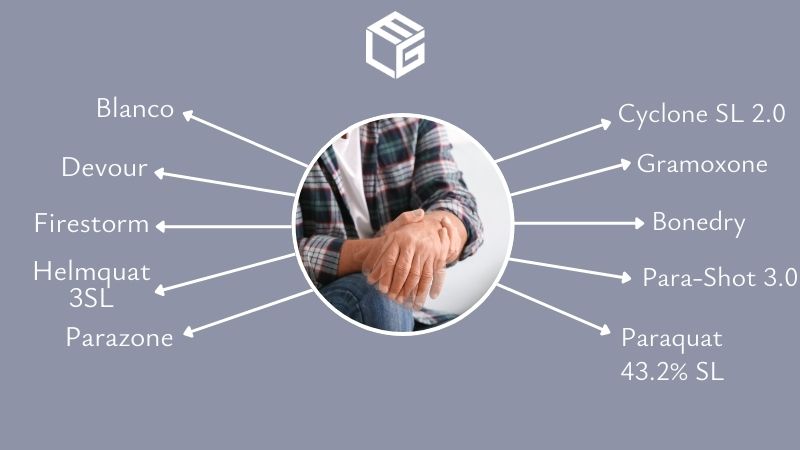-
About »
- Insulin MDL
-
Cases »
- Diseases
- Testimonials
- Government
- Contact
- Get Help Now
-

Para-Shot 3.0 is another brand name under which paraquat is sold throughout the United States. It is a defoliant and desiccant herbicide used for the control of weeds and grasses, as well as a harvest aid. The product contains nearly 44% paraquat dichloride, which makes it highly toxic. Even a small amount, if ingested, is enough to kill a person. For this reason, only licensed applicators who underwent the mandatory training provided by the Environmental Protection Agency can use it.
Claim ApplicationPara-Shot 3.0 comes in containers that contain 2.5 gallons of herbicide. Any route of exposure to this product can be fatal, whether it is ingestion, skin contact, or inhalation. It is also mildly corrosive to aluminum, which is why it should not be stored in aluminum containers. People who were frequently exposed to Para-Shot 3.0 are at high risk of developing Parkinson’s disease and, if you came to struggle with this condition as a result of using or being around this herbicide, we strongly encourage you to contact our law firm, as our main area of practice is toxic exposure and we have the necessary knowledge and resources to help you recover the compensation you deserve from the responsible manufacturers.
It is worthy of note that inhalation is a rather unlikely route of exposure to Para-Shot 3.0 due to low vapor pressure and large spray droplet size, but it can still be harmful if it is prolonged. Paraquat inhalation can result in mucosal irritation and nosebleeds and frequent skin contact may also irritate your skin to a great extent. Individuals who apply Para-Shot 3.0 must wear the following protective equipment while performing this activity:
Following the use of Para-Shot 3.0, people must wash their hands before eating, chewing gum, smoking, or using the toilet, remove clothing immediately if the herbicide got inside, dispose of the protective equipment, wash the outside of the gloves before removal and wash their bodies thoroughly and change into clean clothes. The mixers and loaders of paraquat are required to wear even more protective equipment, such as:
It is important to know that users of Para-Shot 3.0, including mixers and loaders, are at great risk of developing Parkinson’s disease as a consequence of frequent exposure. Thereby, if you have a family member who worked with or was around paraquat for a long time, you should keep a close eye for symptoms such as slowness of movement, a tremor in the hands, legs, jaw, or head, stiffness of the limbs and trunk and impaired balance and coordination. Because the symptoms of Parkinson’s disease are often mistaken for the signs of other conditions, misdiagnosis is very common, with up to 30% of people who struggle with Parkinson’s disease initially receiving a wrong diagnosis. Therefore, you should encourage your family member to get a second and even a third opinion from medical specialists if they worked with or were around paraquat so that they can receive a correct and accurate diagnosis. In the regrettable case they have Parkinson’s disease, please contact our law firm to recover the financial compensation they are eligible for.
Our law firm specializes in toxic exposure and thereby has the necessary knowledge and resources to help you recover the financial compensation you deserve from the liable Para-Shot 3.0 manufacturers if you developed Parkinson’s disease as a result of paraquat exposure. With over 30 years of professional experience, our legal experts will carefully assess your situation to determine whether you are eligible for filing a claim with the companies that manufactured the product you were exposed to. Even though the legal process is complex and tedious, it will require minimal involvement on your part and a family member can help you navigate it, as we know that the majority of our clients are in a lot of physical and emotional distress. Eventually, following claim submission, you will receive the maximum compensation you are entitled to from the Para-Shot 3.0 manufacturers. For more information, do not hesitate to contact us and we will answer your questions.